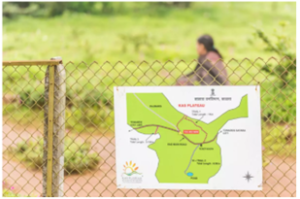Context: Recently, a new study of the sediments from a seasonal lake in the Kaas Plateau has indicated a major shift in the Indian Summer Monsoons towards dry and stressed conditions with low rainfall during the Early-Mid–Holocene, around 8664 years BP.

- Study indicated a relatively reduced rainfall and weak southwest monsoon during the late Holocene (around 2827 years BP).
- Location: Kaas Pathar is a plateau made from volcanic rocks in the Satara district of Maharashtra.
- Etymology: Known as Kaas Pathar in Marathi, its name is derived from the Kaasa tree, botanically known as Elaeocarpus glandulosus (rudraksha family).
- Ecological importance: Kaas Plateau is a UNESCO World Natural Heritage Site, under the name the Western Ghats.It falls in the biosphere of the Western Ghats.
- Designated as a biodiversity hotspot, the Kaas Plateau comes to life with various seasonal flowers forming a floral carpet over the entire lateritic crust during August and September.
- The plateau of Kaas experiences a natural cycle of extreme conditions.
- It becomes wet water-logged cool in monsoon rains, very dry, barren hot summer (45 degree C) and dry winter (5 degree C).
- The soil we find in the Kaas Plateau is a thin layer on top of Deccan rock, with varying quality of nutrients.
- Kaas Pathar is home to 1500 plant species, 450 wildflower species out of which 33 are endangered.

Image Source: The Hindu Buisnessline
News Source: The PIB
Post Views: 174
